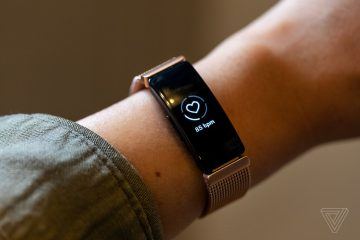by Carol Westbrook

If all the data from the 70 million Fitbits and other wearables in the U.S. were analyzed for clusters of flu-like symptoms, we might have known about the coronavirus epidemic, traced the contacts and perhaps slow its spread, even before widespread testing was available. This is the power of wearable health technology.
Did you know your Fitbit could do that?
What sparked my interest in Fitbit health trackers was the recent news that Google acquired Fitbit, Inc., for $2.1 billion! I thought that wearables were old news, just another fad in consumer electronics that has already passed its time. What value did Google see in wearables?
Wearables are devices used to improve fitness and overall health by promoting and increasing activity. These small electronic devices are worn as wristbands or watches that detect and analyze some of the body’s physical parameters such as heart rate, motion, and GPS location; some can measure temperature and oxygen level, or even generate an electrocardiogram. What is unique about wearables is that they transmit this data to the wearer’s cell phone, and via the cell phone to the company’s secure database in the cloud. For example, the owner inputs height, weight, gender and age, and algorithms provide realtime distance and speed of a run, calories expended, heart rate, or even duration and quality of sleep. Fitness goals are set by the wearer or by default. The activities are tracked, and the program will send messages to the wearer about whether their goals were achieved, and and prompts to surpass these goals. Fitness achievements can be shared with friends of your choice–or with Fitbits’ related partners, even without your express consent. Read more »
